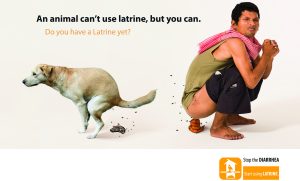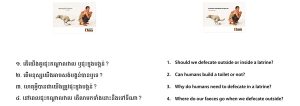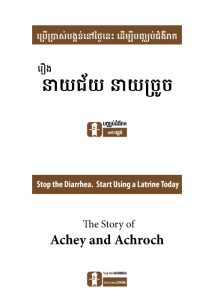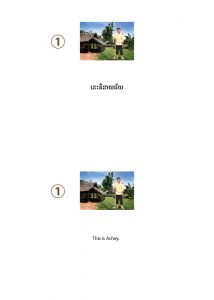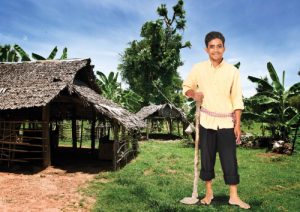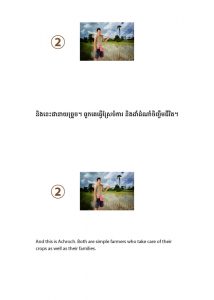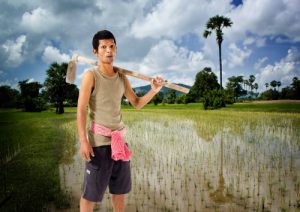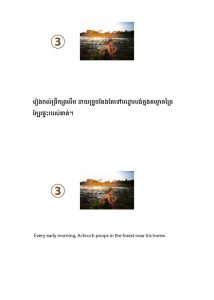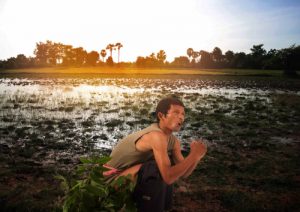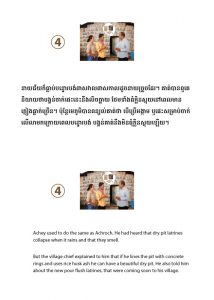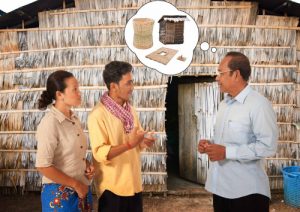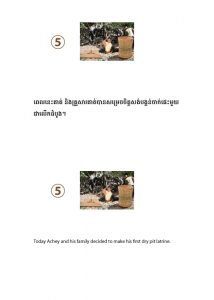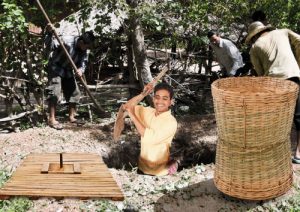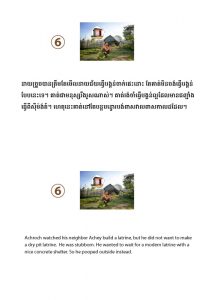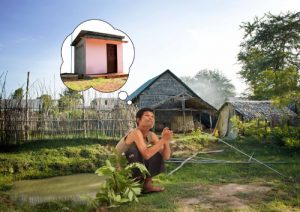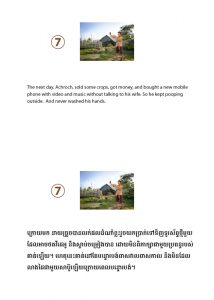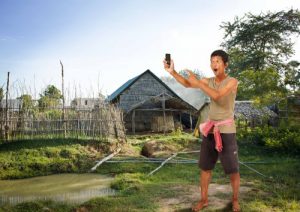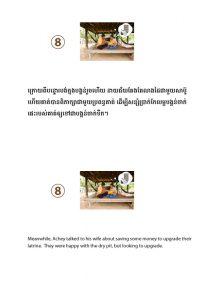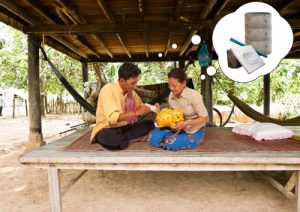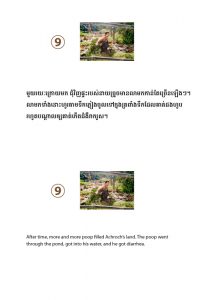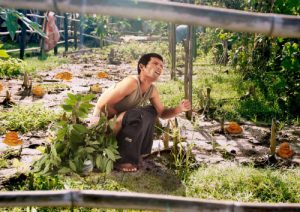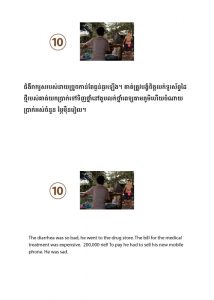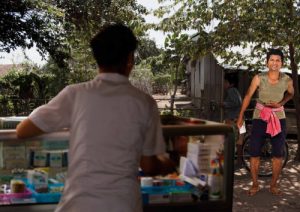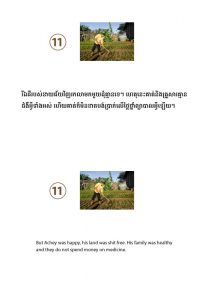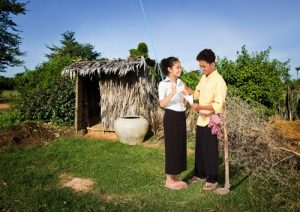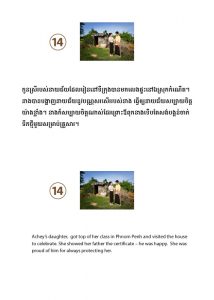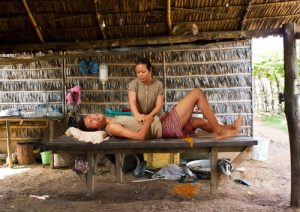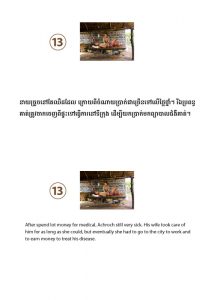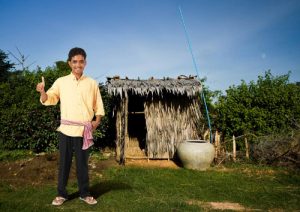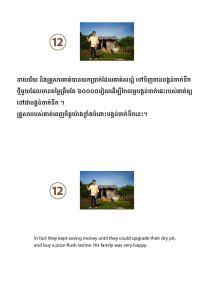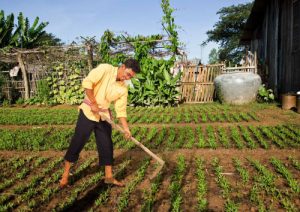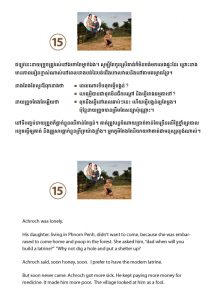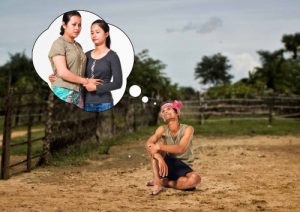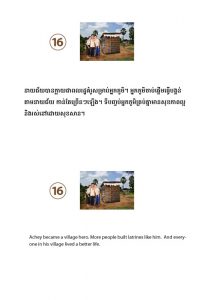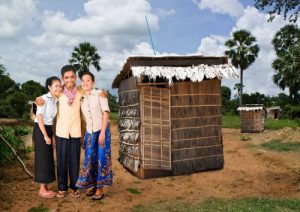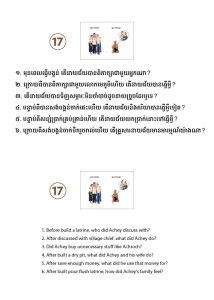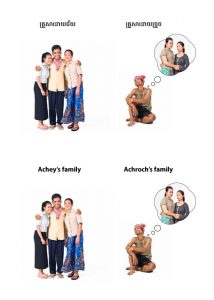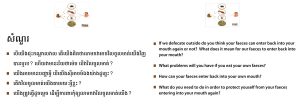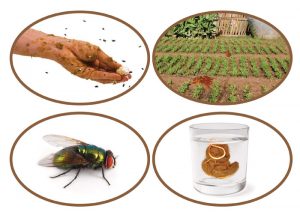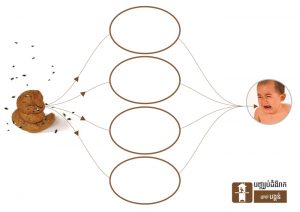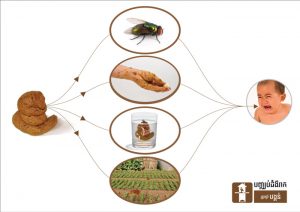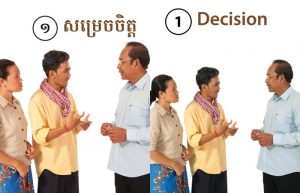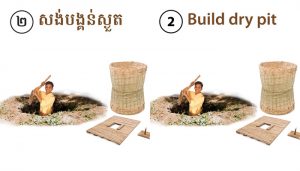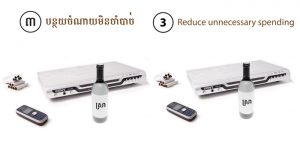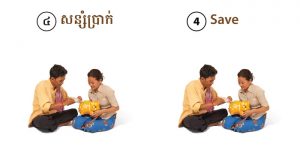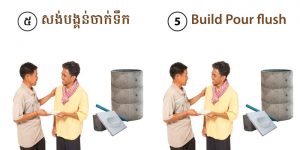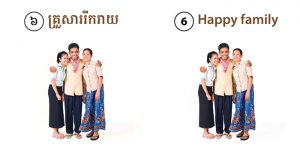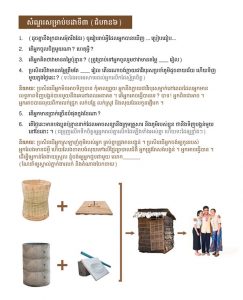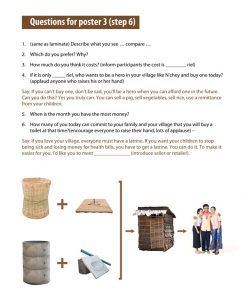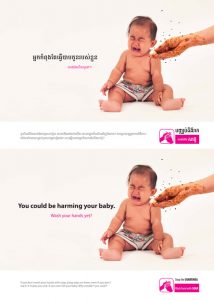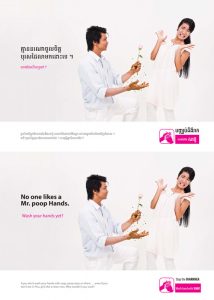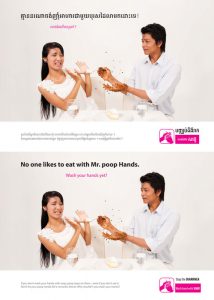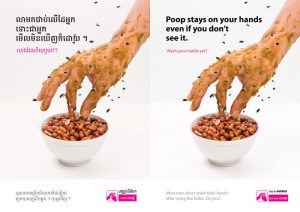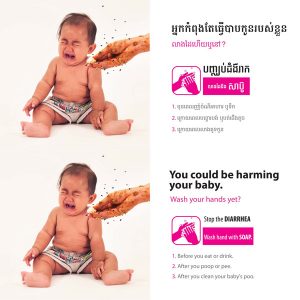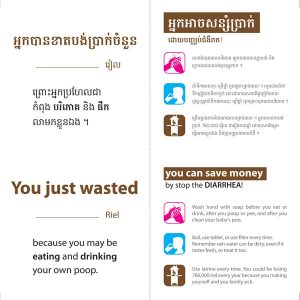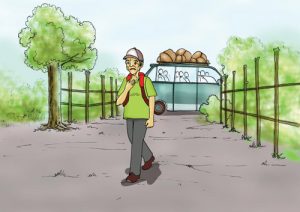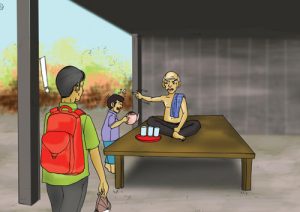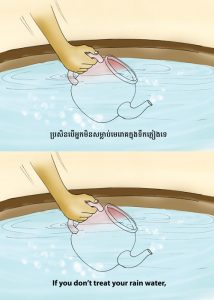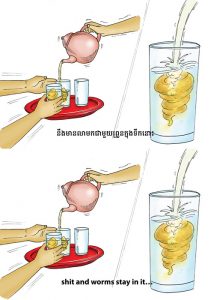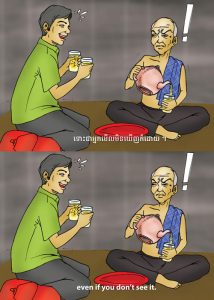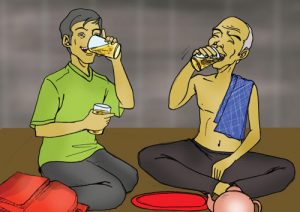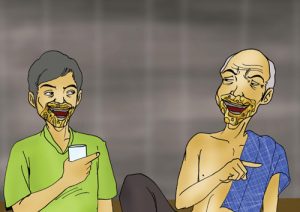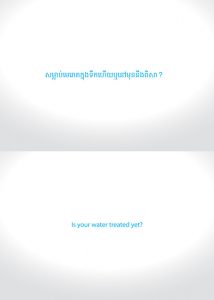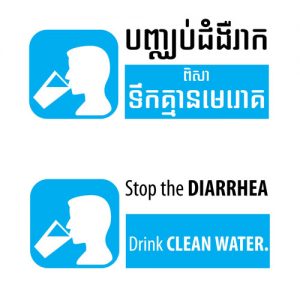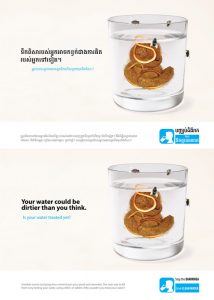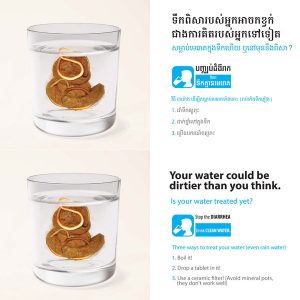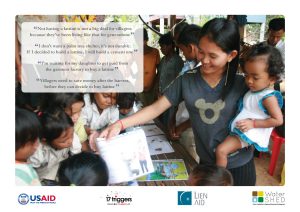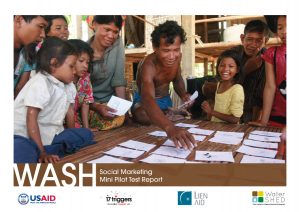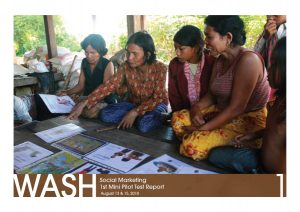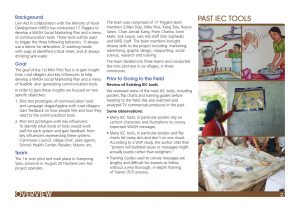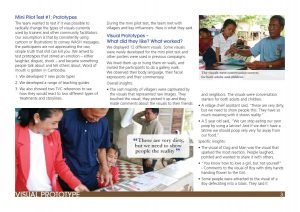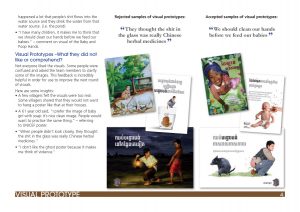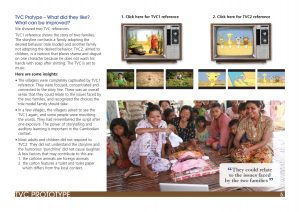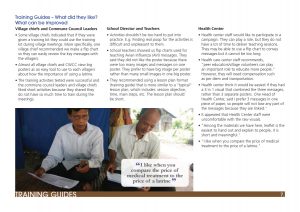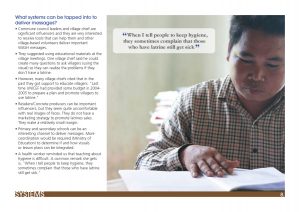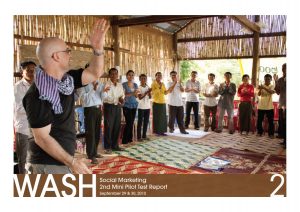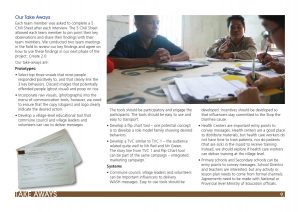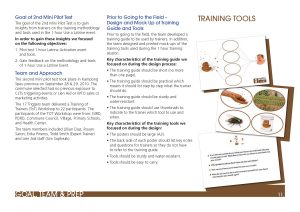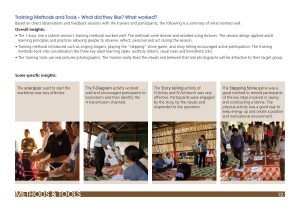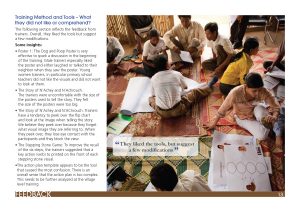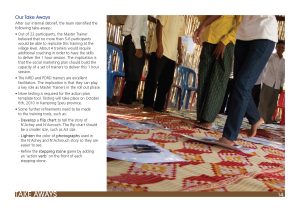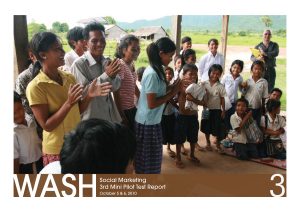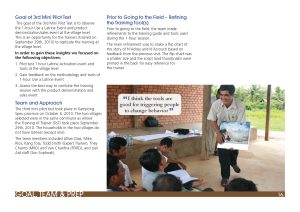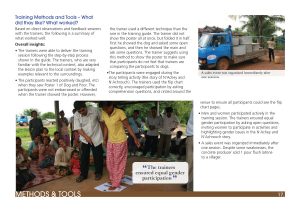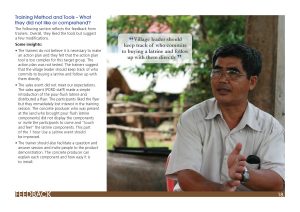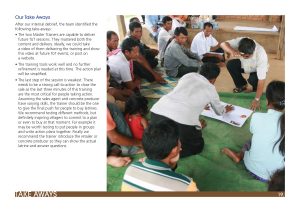Stop the diarrhea
WaterSHED, under the guidance of the Cambodian Ministry of Rural Development, created the “Stop the Diarrhea” WASH campaign. The core of the campaign plan was the development of an open-source toolkit to serve as a springboard for WASH marketing campaigns for anyone working in water, sanitation, and hygiene. The tools have been tested with villagers and village leaders with positive reactions. While long-term results have yet to be quantified, the following tools serve as functional examples that we hope organizations and governments can use in current and future WASH programs.
Because the tools are open-source we encourage organization to adopt not only the tools represented here, but also the concepts and initiatives behind them. If you would like to have access to the full toolkit and/or the graphics files to edit for other contexts and languages, please contact us and we can help make a request to the Cambodian Ministry of Rural Development.
 Use a latrine
Use a latrine
 Wash hands with soap
Wash hands with soap
 Drink treated water
Drink treated water
 Poster – Human and Dog
Poster – Human and Dog
Shame and disgust are strong behavioral drivers. With this in mind, this poster challenges the existing social norm that defecating outside is acceptable. The image is shocking but has proven to spark discussion and self-realization that all people should use a latrine.
 The Story of Achey and Achroch
The Story of Achey and Achroch
This is a flip chart that tells the story of Achey and Achroch. Achey’s family is a role model and shows how one family can construct a latrine. Through the use of open questions at the end of the story, participants see the benefits and costs of constructing a latrine.
Key Messages include:
- Defecate in fields and forest and it will make your family sick
- Your medical expenses are higher than the cost of a nice latrine
- A nice pour-flush latrine is not as expensive as you think
- You can make your dry pit beautiful by reinforcing it with bamboo or concrete rings
- You can be the village hero if you construct a latrine
- Your relatives in the city will like to visit you if you have a latrine
- Your wife and daughter will have more privacy
- Buying a latrine is a family decision
 Raw F-Diagram
Raw F-Diagram
In a proposed 1-hour training this F-Diagram is used after the Achey and Achroch flip chart. Participants are asked to brainstorm the different ways faeces can reach your mouth. When participants identify a correct answer, they are given a visual aid of the transmission channel and asked to affix it on the poster.
 Stepping Stones
Stepping Stones
The Stepping Stones activity physically encourages people to take the steps to construct the latrine. They line up in two teams and they race to take the steps while shouting the steps out loud. This lively activity encourages movement and physical activity which creates a dynamic environment.
 Poster – Buy or Build a Latrine
Poster – Buy or Build a Latrine
At the end of the 1-hour event, participants are invited to fill in an action plan. The action plan encourages people to commit to an action: either build or reinforce a dry pit latrine, or buy a simple pour-flush latrine. They then identify a date they want to have a latrine, calculate the amount they need to save, and then sign the action plan. Participants are invited to take the action plan home, and to share it with their families.
 Inspirational Video
Inspirational Video
This short video tells the story of Village Chief, Choern Sok who believed his village would be significantly healthier if everyone had a latrine, so much so that he worked with other village leaders, families, schools, and health centers to make buying toilets a community priority. Three months after he began his movement, 100% of the families in his village had their own latrine.
 Posters and Leaflets – Wash Your Hands Yet?
Posters and Leaflets – Wash Your Hands Yet?
In Kampong Speu province, 55% of rural Cambodians say they wash their hands with soap 2-3 times per day. But it is really hard to know if they really do as they say. These posters and leaflets are meant to:
- Shock mothers and other child care givers by showing them what it looks like to feed a baby with dirty hands
- Drive home the message that when you don’t wash your hands with soap, faeces stay on them, while positioning those who don’t wash their hands as undesirable in a humorous way
 Storyboard – Treat Your Drinking Water
Storyboard – Treat Your Drinking Water
Many people think rainwater is the cleanest water possible. This televison commercial storyboard attacks that directly, making people question any water that is not treated.
 Poster and Leaflet – Is Your Water Treated Yet?
Poster and Leaflet – Is Your Water Treated Yet?

